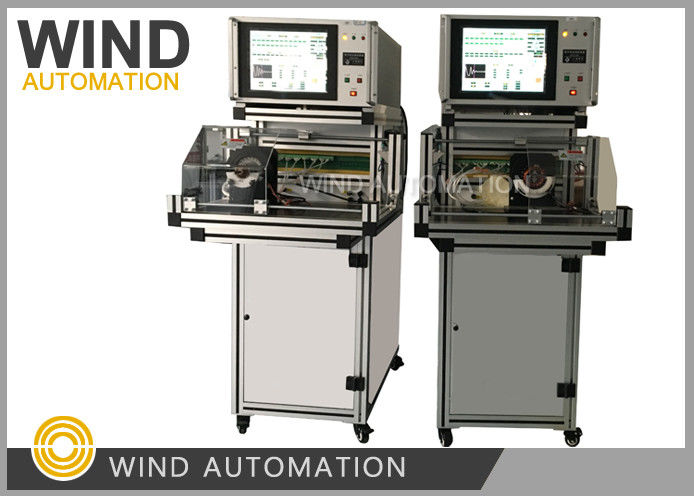

This arrangement ensures that any change of current in the shunt field does not affect the current through hold-on coil at all. The no voltage coil (or Hold-on coil) is connected with a current limiting resistance Rh. The field winding gets directly connected to the supply, as the lever moves touching the brass arc (the arc below the resistance studs).
Dc motor winding series#
When the motor is overloaded beyond a predefined value, 'overcurrent release electromagnet' D gets activated, which short-circuits electromagnet E and, hence, releases the lever and the motor is turned off.Ĥ Point Starter The main difference between a 3 point starter and a 4 point starter is that the no voltage coil (electromagnet E) is not connected in series with the field coil. However, to overcome this drawback a brass or copper arc may be employed within a 3 point starter which makes a connection between the moving arm and the field winding, as shown in the figure of 4 point starter below.

But, as the value of starter resistance is very small as compared to the shunt resistance, the decrease in shunt field current may be negligible. It can be seen that, when the arm is moved from the position 1 to the last position, the starter resistance gets added in series with the field winding. This electromagnet releases the lever when there is no (or low) supply voltage. The electromagnet 'E' (no voltage coil) holds the lever at this position. Now, as the lever reaches to position 6, all the resistance is cut out from the armature circuit and armature gets directly connected across the supply. Then, as the lever is moved further, the resistance is gradually is cut out from the armature circuit.
Dc motor winding full#
During starting, full resistance is added in series with the armature winding. When the lever touches point 1, the field winding gets directly connected across the supply, and the armature winding gets connected with resistances R1 to R5 in series. When the connected dc motor is to be started, the lever is turned gradually to the right. The basic concept behind every DC motor starter is adding external resistance to the armature winding during starting.įrom the followings, 3 point starters and 4 point starters are used for starting shunt wound motors and compound wound motors.ģ Point Starter The internal wiring of a 3 point starter is as shown in the figure. There are various types of dc motor starters, such as 3 point starter, 4 point starter, no-load release coil starter, thyristor controller starter etc. So, a DC motor is started by using a starter. To avoid the above dangers while starting a DC motor, it is necessary to limit the starting current. In this case, the large starting current will die down quickly because of the fast rise in the back emf. It does not result in any harm because they gather speed quickly due to small rotor inertia. Very small dc motors, however, may be started directly by connecting them to the supply with the help of a contactor or a switch. To avoid this, a suitable DC motor starter must be used. Hence, building up the back emf slowly causing the level of high starting current maintained for quite some time.

In practical DC machines, armature resistance is basically very low, generally about 0.5 Ω. Hence, armature current at the moment of starting can be given as I a = E / R a.

Now, when the motor is at rest, obviously, the back emf E b = 0. Basic operational voltage equation of a DC motor is given asĮ = E b + I aR a and hence, I a = (E - E b) / R a


 0 kommentar(er)
0 kommentar(er)
